“The Happy Kingdom”
Wednesday, November 16. The plane from Kathmandu to Paro, Bhutan “hangs a right at Everest, then nose-dives into Paro,” says Mary.
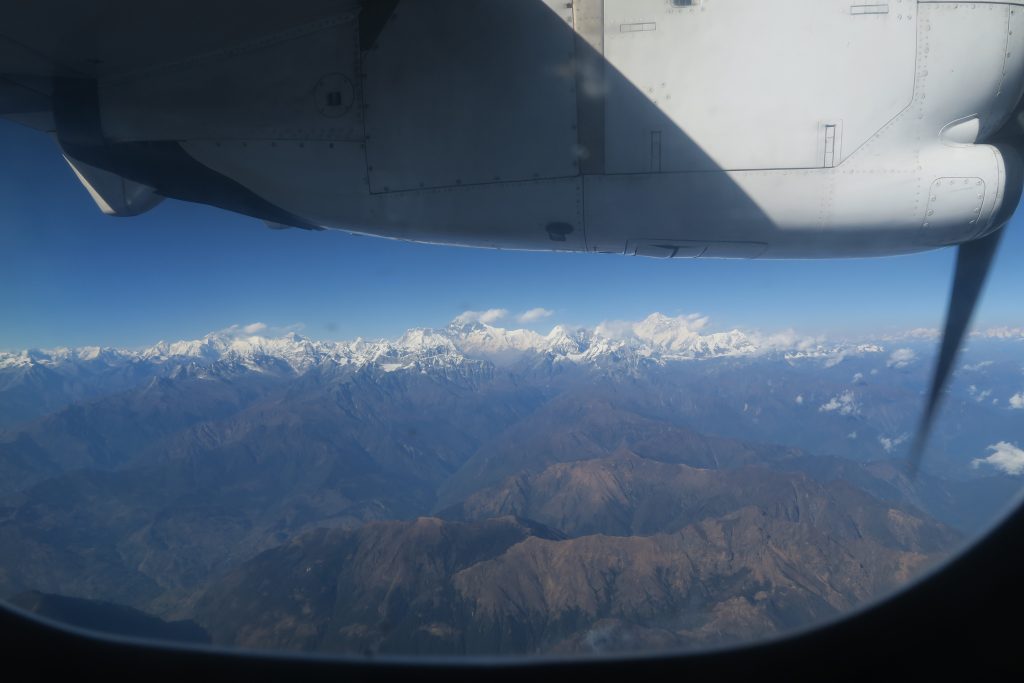
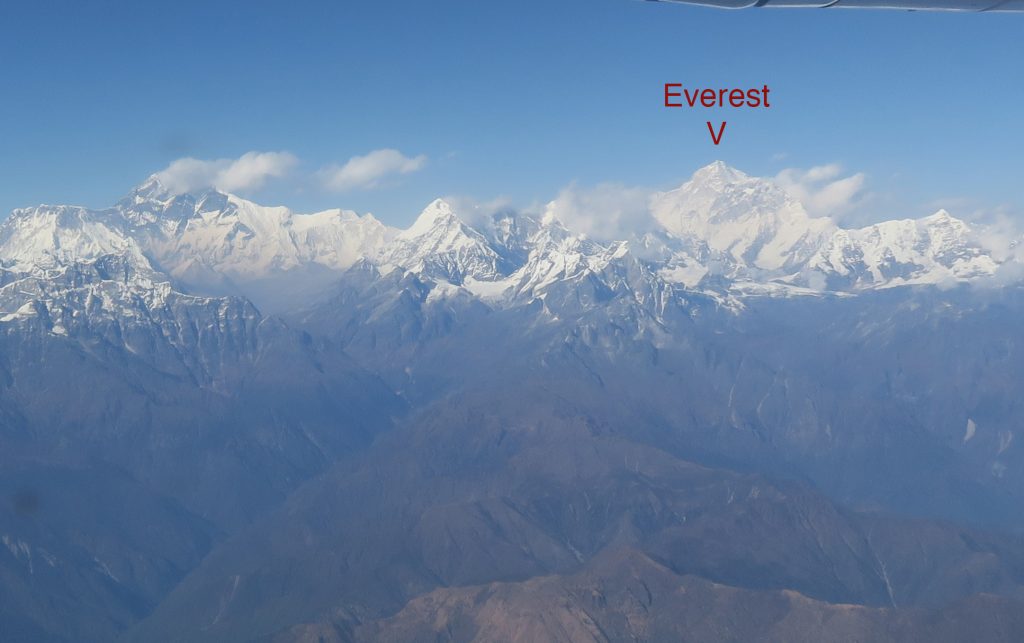
As we approach the airport, terraced rice farms appear, and Mary mists up. “This is My Nepal!” she says. As we get closer I get the impression from the buildings we see that they must have influenced Frank Lloyd Wright.
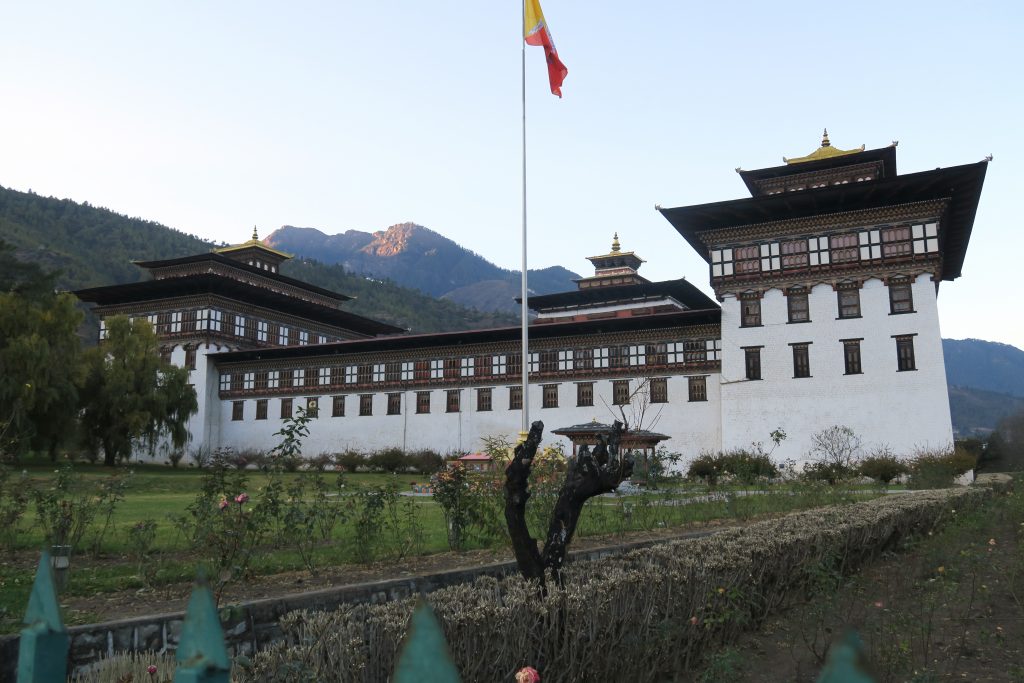
This is the Dzong, or fort, of the capital, Thimpu.
We are picked up by a very pleasant and efficient guide, Wang, and a dour driver, Wang Chin (no relation). One day they both dressed in black. It was like a Bhutanese version of the Blues Brothers.
The drive was along twisty two-lane roads through the mountains. We encountered two landslides, the result of recent monsoons. Half way to Thimpu, where we’ll be staying the night, we stop to see the Iron Bridge, a 600-year-old bridge crossing the river to a monastery, I believe founded by the same guru that founded the Tiger’s Nest Monastery. The chains inside the houses at each end are original; the rest are replacements. Even so, because of the wind we crossed a more modern bridge.
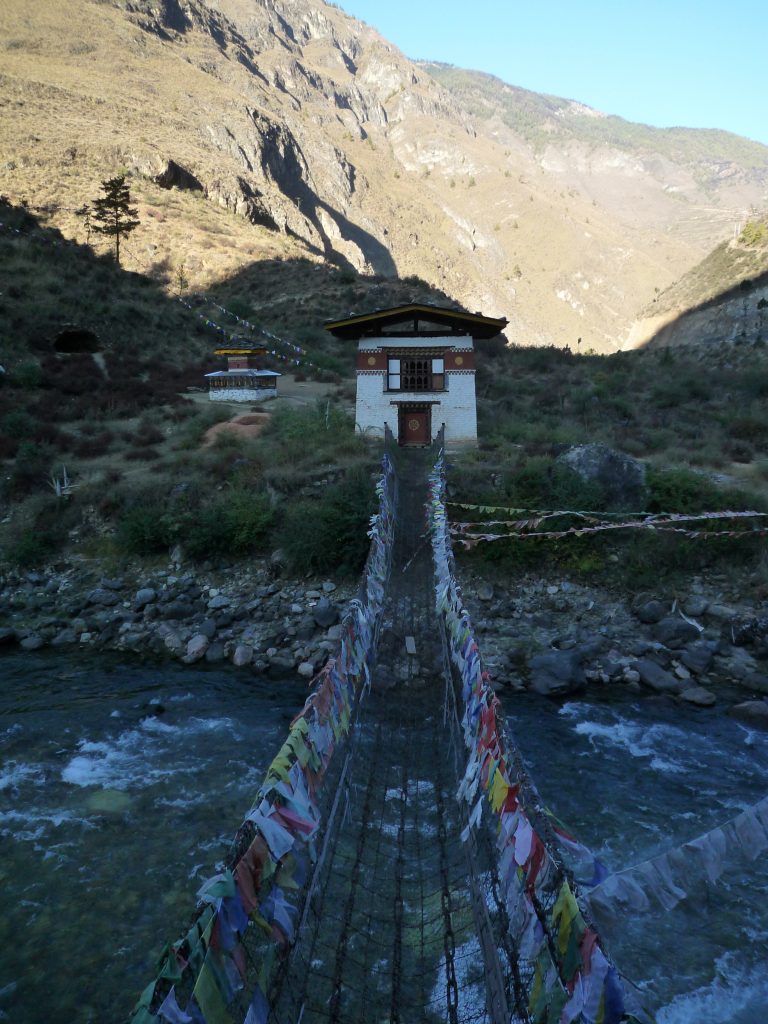
We arrive at the Druk Hotel — ‘Druk’ is the local language’s word for Dragon, the national symbol — in Thimpu at around 5pm and it is getting dark.
Thursday, the 17th, we’re faced with a daunting itinerary: 1. Bank to change money. 2. Post office to get stamps made and send off some letters. 3. Visit a workshop of weavers. 4. Drive up a mountain to see a huge Buddha. 5. Visit an animal rescue area to see the Takin, the country’s signal animal. 6. Lunch of too much food and too-old chicken. 7. Visit an “art school” where young people are taught traditional painting, carving, etc.
8. The textile museum. 9. Paper factory. 10. Archery contest with traditional bamboo bows and arrows. 11. Back to the hotel to catch our breaths. 12. The Thimpu Dzong, in time for lowering the flag. 13. Back to the hotel for a drink, then collapse for the night. The day was jam-packed, but exhausting.
The Bhutanese are justifiably proud of their textile arts. They weave in both wool and silk, and the silk is sometimes ‘wild silk,’ a nubbly type I’m not familiar with.
The seated Buddha, placed high on the side of a hill, is a very impressive monument to a former king, especially for such a small country. Inside it is achingly beautiful. Since there are no photos allowed inside, I tried to capture the huge statues located in the middle of the shrine in a sketch. The presiding monk was OK with that, even encouraging.
There are no zoos in Buddhist Bhutan, no containment of animals, but we saw a rescue camp for animals in trouble, including some of the rare Takin, bovines with heads like goats.
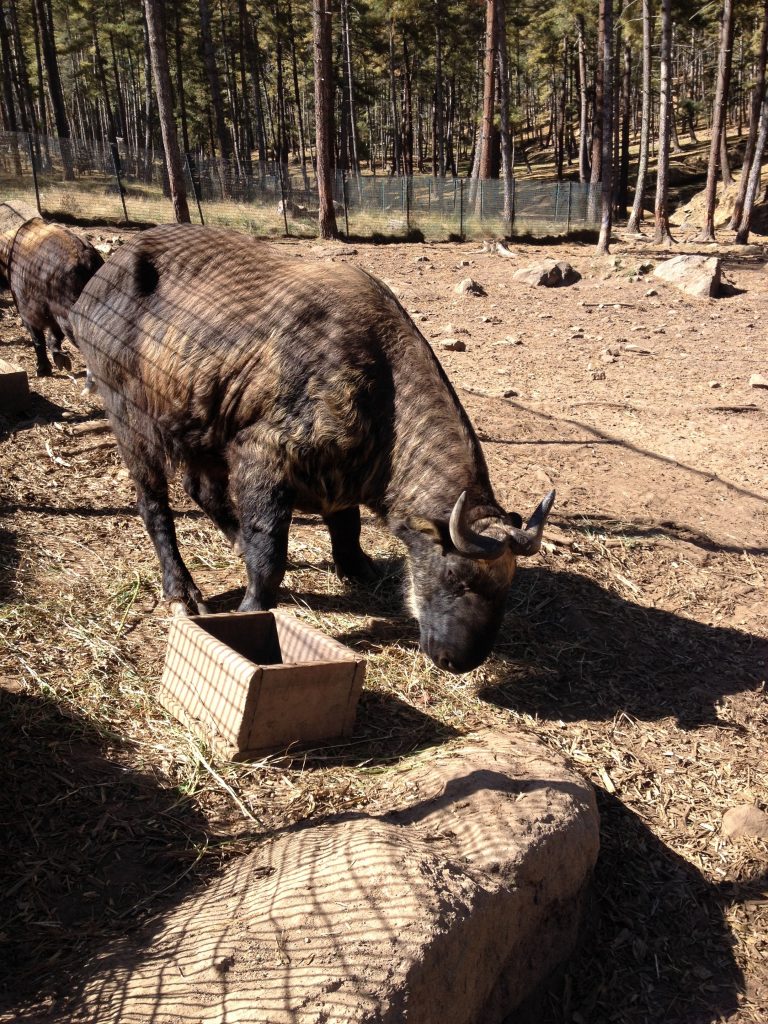
At the art school I caused a sensation when I showed a student the pens and brushes I used for my ink drawings. They were painstakingly drawing traditional forms in hair-thin lines, using extremely fine brushes. Usually they just ignored visitors like us. That was great fun; I hope no bad repercussions for the kids.
Archery is the national sport. This contest was between two teams shooting at two dinner-plate size targets about 150 meters apart, as far as I can tell. They didn’t hit the targets with their bamboo arrows that often. At that distance I was surprised they hit them at all!
Thimpu’s Dzong, or fort, is its administrative center. The lowering of the flag was a very English-looking ceremony, with monks as well as military and shawms instead of a bugle blowing taps.
The next day, Friday, November 18, we were picked up and taken to the farmers’ market. There is a wide range of vegetables and fruit, herbs and spices, and incense. This is a very religious society. The surprise for me was sugar canes, bananas and other tropical fruit, grown in the south of Bhutan. This is a tiny country, and it was cold where we were. I didn’t expect such a diversity in terms of climate in such a small area.
We drove back to Paro, where the international airport is. This is a picturesque town, and after the first night (in a frigid box of a hotel), we stayed at a hotel with a panoramic view that included Paro’s Dzong and its watchtower.
Wang took us to see an archery contest with modern bows and arrows–the scores were much higher. Curiously, their compound bows are all made in the US. We are obliged to visit Paro’s museum — about equivalent in breadth of exhibits as the NC history center in New Bern: dance masks, religious art, stuffed animals, and some videos.
We were taken to a simple second-story restaurant for lunch with really good food. And later, in the evening, we returned. They had decorated one of the bigger tables, and there was a Happy Anniversary cake. Mary and I had met 9 years ago that day. They treated us and the two Wangs to an 11-course meal and a bottle of surprisingly good Bhutanese peach wine!
Saturday, November 19. What can I say about the Tiger’s Nest Monastery that hasn’t already been said.
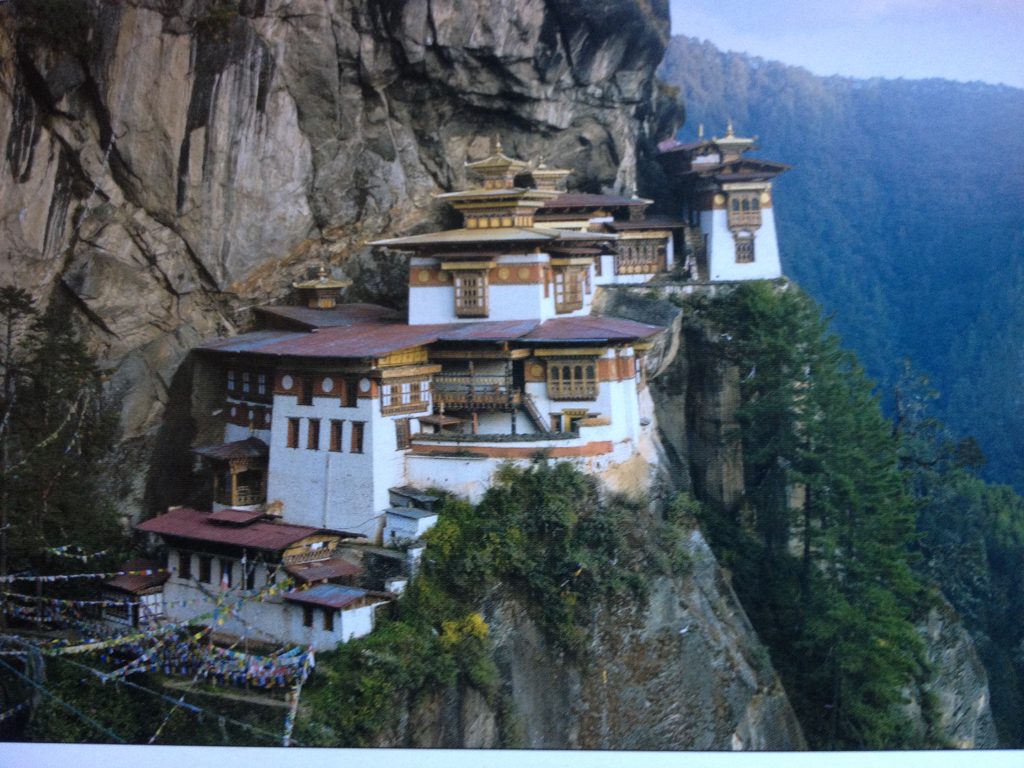
It’s truly the journey, not the destination, as the main temple is nothing unusual, and the secondary tempe I visited was interesting in its use of garish, oversize fake flowers on the altar, and Believe It Or Not! female face found in the stone with a perfectly formed nose, symmetrically spaced eyes, etc. Mary showed uncommon grit in making the trek. She really suffered in the high altitude from her blood condition. It was amazing that she actually made the trek up and then back.
Once back in the car, we were driven to a farm where we were treated to a ‘stone bath.’ Red-hot stones are plunged into a tub of spring water to heat it to, well, hotter than either of us could stand. The minerals in the water and from the stones themselves, along with herbs floating in the water, are considered to be therapeutic. We were each given a tub in adjacent rooms. After cooling off the water in the tubs by adding enough spring water, we soaked for half an hour. I guess this was actually beneficial because neither of us suffered from leg cramps or any other ill effects from our climb.

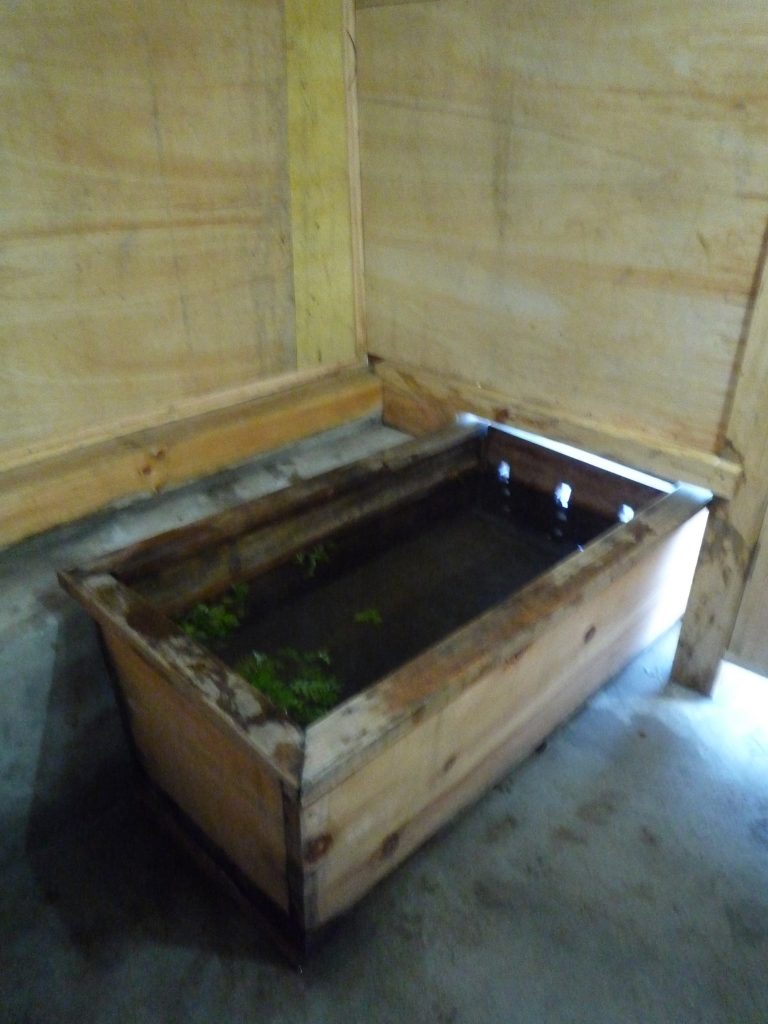
After the bath, we watched our hostess make dinner for us: peppers and cheese, hot enough to give me hiccups; eggs cooked in butter; dried mushrooms, beef and pork; carrots; white mushrooms with cottage cheese; and red rice. Also, before dinner we were served ‘milk tea’ with pounded rice, a snack made with freshly harvested rice, then butter tea and arrak, a home-made wheat-based alcohol.
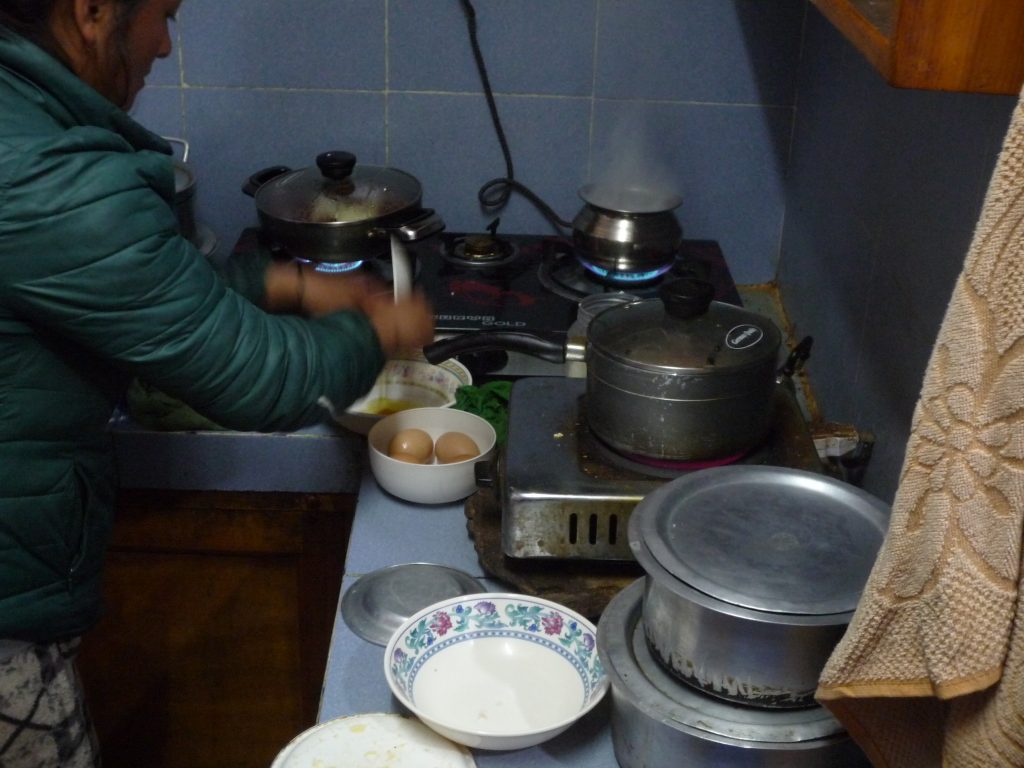
On Sunday, the 20th, we started off for Chelela Pass, the highest in Bhutan, which gave us a great view of the Himalayas. It was crowded with Indian tourists, some in buses, some on motorcycles. There was a forest of memorial flags there as well as prayer flags, and on the highest peak some big white frames, which are for the bodies of dead infants. Tradition has them ‘given to the sky.’
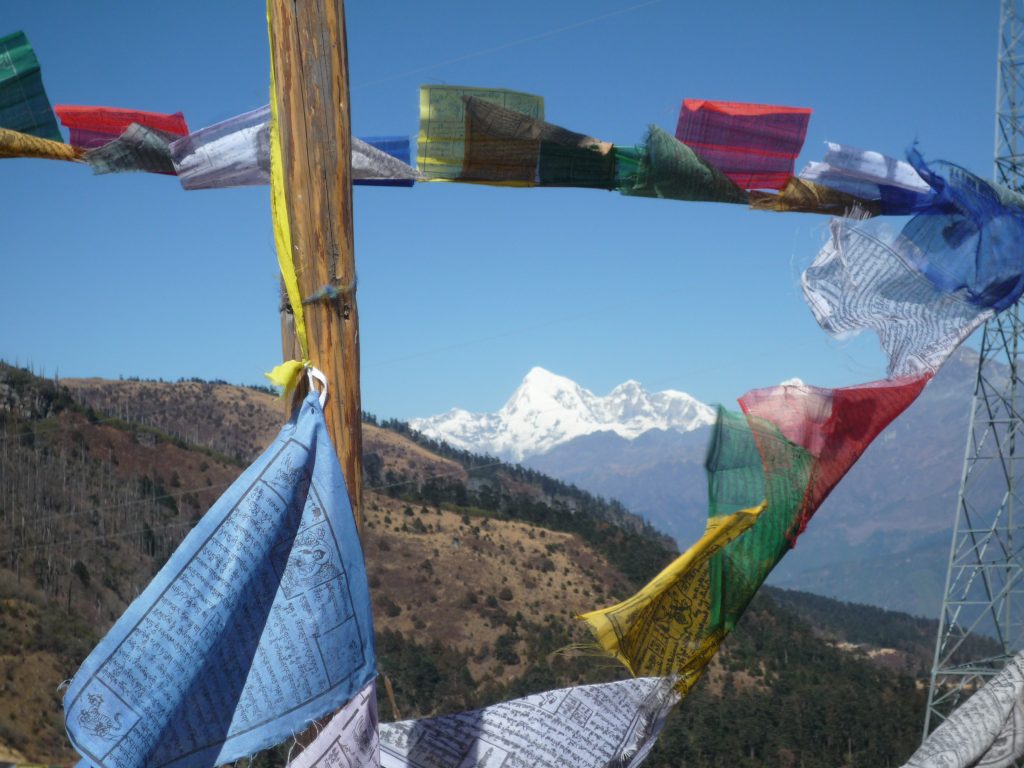
On the way down we stopped by the side of the road for a picnic prepared by what was by then our favorite restaurant in Bhutan. We skipped any further excursions, and went back to the hotel for some R&R.
Our lunch was a picnic by the road in a clearing full of more memorial flags. It had some logs we could sit on to eat. A dog showed up, then another . . . They got our leftovers–very Buddhist.
Next: Off to Bangkok!
